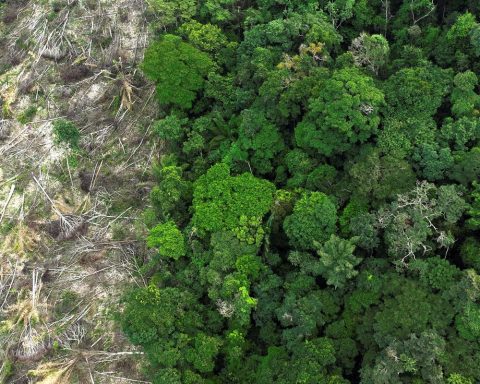The average debt level of Brazilian families in 2021 was the highest in 11 years, according to the Consumer Indebtedness and Default Survey (Peic), released today (18) by the National Confederation of Commerce in Goods, Services and Tourism (CNC).
According to the survey, the last year had a record in terms of total indebtedness, recording an average of 70.9% of Brazilian families, while December reached the historical maximum level with 76.3% of the total number of families. According to CNC, families resorted more to credit to support consumption.
In the evaluation by income bracket, the average indebtedness of families with up to 10 monthly minimum wages increased by 4.3 percentage points (pp), reaching 72.1% of the total. In the upper income bracket, above 10 minimum wages, the indicator increased even more, 5.8 pp, and closed at 66%.
The president of CNC, José Roberto Tadros, assesses that, among families with incomes above 10 minimum wages, the pent-up demand, especially for the consumption of services, made the indebtedness increase even more expressively, especially on the credit card.
“The process of immunization of the population made it possible to ease the pandemic, reflecting the increase in the movement of people in commercial areas throughout the year, which responded to the resumption of consumption, mainly of services”, said Tadros, in a note.
In comparison with 2020, of the five regions of the country, only the Midwest showed a drop in the index, 0.3 percentage point. The North registered stability, and the Southeast stood out with an increase of 5.9 percentage points (pp), followed by the South (+5.5 pp) and the Northeast (+4.5 pp). However, considering the total indebtedness, the South had the highest percentage, approaching 82%.
default
In the opposite direction of the indebtedness indicators, in the last year, the default numbers showed a decrease. According to the survey, the average percentage of families with overdue bills and/or debts decreased by 0.3 pp compared to 2020, reaching 25.2%.
After starting 2021 at a higher level than that observed at the end of the previous year, the monthly percentage of delinquency decreased until May, but started to show an upward trend since then, reaching 26.2% in December and above the annual average.
“The percentage of families who declared they were unable to pay their bills and/or debts in arrears and who, therefore, must remain in default also had a reduction in comparison with 2020, 0.6 pp, totaling 10.5% of households in the country. The numbers indicate that this portion of consumers showed different movements throughout the year. While, in the first half of the year, the recurring delinquency indicator fluctuated between low and high, as of July it began to show a downward trend, ending the year at 10% of total households, below the annual average,” said the CNC.
For the CNC economist responsible for the research, Izis Ferreira, the numbers indicate that, despite the tighter financial conditions, consumers were able to pay off their financial commitments and avoided an increase in delinquency until the end of the third quarter. In the last three months of the year, however, the indicator of overdue accounts increased, already indicating an upward trend for the beginning of 2022.
“Consumers will continue to face the same financial challenges as in the second half of 2021, mainly inflation, high interest rates and a still fragile formal job market. Added to this is the expiry of typical first-quarter expenses, which should further tighten domestic budgets in this period,” said Izis.

















